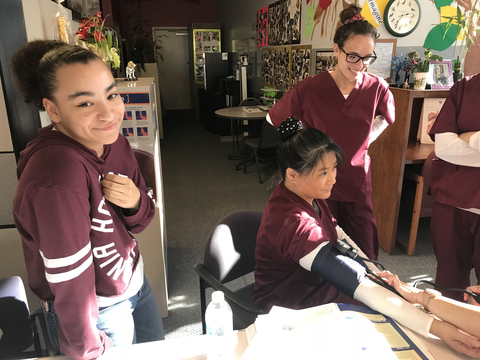LOS ANGELES– While millions of people are currently unemployed and looking for work, there is a massive labor shortage with 10.9 million unfilled jobs across the U.S.1 The blame, as a recent Harvard Business Review article points out, is because “the U.S. education system is not held accountable for ensuring that students are properly equipped with the skills and capabilities to prepare for a career where they can obtain financial stability.”2
February is National Career Technical Education (CTE) Month, and it is important to shine a light on the ways all schools can offer career pathways for high school students. Educators need to prioritize job skills and career readiness, and give credibility to vocational education options alongside college prep and access.
“This year is further challenging for CTE, because along with an overall shortage of teachers, it’s even more difficult to recruit CTE teachers because they must have industry experience,” explained Joe Scibana, director of career and experiential learning programs at Learn4Life, a network of 80+ public high schools. “We now have Integrated CTE programs, which allow us to offer job skills training without a CTE teacher. Students can work on the core study of a pathway before moving on to a more intensive course taught by a CTE teacher.”
For example, Scibana explains, in the Health & Patient Care pathway, the Integrated CTE classes cover the basics of medical vocabulary, anatomy and exploration of the types of healthcare careers students can pursue. These meet all the state requirements and can be taught by teachers who are not CTE certified. Students are discovering the countless healthcare career options like emergency medicine, fitness and kinesiology. “Instead of cancelling essential CTE classes because of a staff shortage, we’ve been keeping the programs going with existing teachers leading the Integrated CTE courses,” he said.
Many of Learn4Life’s Integrated CTE courses allow students to earn core credits toward their graduation, not just elective credits. Integrated S.L.A.M. blends literature, art and media, with expressive writing, research and spoken performance. While earning English Language Arts credit, students gain experience for a career in theater and performing arts.
There is an urgent need for a skilled workforce, especially in industries such as healthcare, IT and hospitality. High schools need to expand their offerings of CTE pathways, and Integrated CTE classes can fill the gap until teacher shortages improve. Throughout the pandemic Learn4Life easily pivoted to online instruction and found a solution to CTE teacher shortages, thanks to its personalized learning, one-on-one instruction and flexible scheduling.
Scibana says Integrated CTE classes are a good way to maintain a robust CTE program. “Another benefit is that youth enrolled in CTE programs are more engaged, graduate high school at higher rates, earn industry-recognized credentials, and have rewarding and family sustaining careers.”


